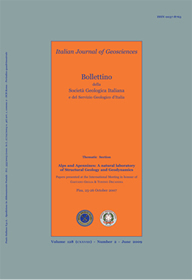
Messinian-Early Pliocene crustal shortening along the Tyrrhenian margin of Tuscany, Italy
Federico Sani(1), Marco Bonini(2), Andrea Cerrina Feroni(3), Francesco Mazzarini(4), Giovanna Moratti(2), Giovanni Musumeci(5), Giacomo Corti(2), Federica Iatta(1) & Alessandro Ellero(3)
(1) Dipartimento di Scienze della Terra, Università degli Studi di Firenze, Via G. La Pira, 4 - 50121 Florence, Italy, fsani@geo.unifi.it.
(2) CNR, Consiglio Nazionale delle Ricerche, Istituto di Geoscienze e Georisorse, U.O. Firenze, Via G. La Pira, 4 - 50121 Florence, Italy.
(3) CNR, Consiglio Nazionale delle Ricerche, Istituto di Geoscienze e Georisorse, Via Moruzzi, 1 - 56124 Pisa, Italy.
(4) INGV, Istituto Nazionale di Geofisica e Vulcanologia, Sezione di Pisa, Via della Faggiola, 32 - 56126 Pisa, Italy.
(5) Dipartimento di Scienze della Terra, Università degli Studi di Pisa, Via S. Maria, 53 - 56126 Pisa, Italy.
Abstract
Keywords
Get Full Text